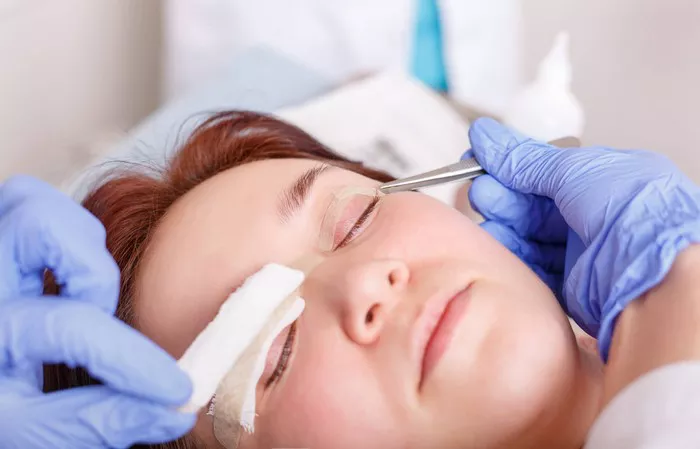Blepharoplasty surgery, also known as eyelid surgery, is a popular cosmetic procedure aimed at rejuvenating the appearance of the eyelids. It addresses concerns such as sagging skin, puffiness, and excess fat, helping individuals achieve a more youthful and refreshed look. In this article, we provide a comprehensive guide to how blepharoplasty surgery is performed, outlining the steps and techniques involved in this transformative procedure.
Step 1: Consultation and Preoperative Planning
The first step in the blepharoplasty process is an initial consultation with a qualified and experienced plastic surgeon. During this consultation, you will discuss your concerns, goals, and expectations for the surgery. The surgeon will examine your eyelids, evaluate your overall health, and inquire about your medical history.
Based on this assessment, the surgeon will determine if you are a suitable candidate for blepharoplasty and discuss the various surgical options available to address your specific concerns. They will explain the potential risks and benefits of the procedure and provide you with detailed preoperative instructions to follow in preparation for the surgery.
Step 2: Anesthesia Administration
Blepharoplasty surgery can be performed under local anesthesia with sedation or general anesthesia, depending on the extent of the procedure and the preferences of the surgeon and the patient. Local anesthesia with sedation allows you to remain relaxed and comfortable throughout the surgery, while general anesthesia ensures that you are completely asleep and unaware during the procedure.
The anesthesia choice will be discussed and determined during your consultation with the surgeon, taking into account your medical history, preferences, and the complexity of the surgery.
Step 3: Incision Placement
Once the anesthesia has taken effect, the surgeon begins the surgical procedure by making careful incisions in the appropriate locations. The placement and length of the incisions depend on the specific technique being used and the areas being addressed.
For upper blepharoplasty, incisions are typically made in the natural creases of the upper eyelids, allowing for discreet scarring. Lower blepharoplasty incisions can be made just below the lower lash line or on the inside of the lower eyelid, depending on the approach chosen by the surgeon.
Step 4: Tissue Removal and Rejuvenation
After creating the incisions, the surgeon will carefully remove excess skin, fat, and tissue as needed. The precise technique used will depend on your individual anatomy, goals, and the surgeon’s expertise. Here are some common approaches:
Upper Eyelid Surgery: For upper blepharoplasty, the surgeon will remove excess skin and fat from the upper eyelid, creating a smoother and more youthful appearance. They may also tighten the underlying muscles if necessary.
Lower Eyelid Surgery: In lower blepharoplasty, the surgeon may perform one of several techniques, depending on the specific concerns being addressed. They may remove or reposition fat to reduce puffiness or perform a technique called a transconjunctival blepharoplasty, where fat is accessed through an incision made on the inside of the lower eyelid.
Combination Approach: In some cases, both upper and lower blepharoplasty may be performed simultaneously to achieve comprehensive rejuvenation of the entire eye area. This combination approach allows for a more balanced and harmonious outcome.
Step 5: Closure and Recovery
Once the necessary adjustments have been made, the surgeon will carefully close the incisions with sutures or surgical adhesive. They will take great care to ensure proper alignment of the eyelid tissues and minimize scarring.
After the surgery, you will be closely monitored in a recovery area until you are ready to be discharged. The surgeon will provide detailed postoperative instructions, including information about medication, follow-up appointments, and guidelines for managing swelling and bruising.
Recovery and Results
During the recovery period, it is important to follow the surgeon’s instructions closely to promote proper healing and achieve the best possible results. You may experience some swelling, bruising, and mild discomfort, but these are temporary and can be managed with prescribed medication and cold compresses.
It is advisable to keep your head elevated, avoid strenuous activities, and protect your eyes from excessive sun exposure during the initial recovery period. Your surgeon will provide a timeline for returning to regular activities and exercise based on your individual progress.
Over time, the swelling will subside, and you will begin to see the transformative results of your blepharoplasty surgery. The eyelids will appear more youthful, rejuvenated, and refreshed, enhancing the overall aesthetics of your face.
Conclusion
Blepharoplasty surgery is a highly effective procedure for rejuvenating the appearance of the eyelids. By removing excess skin, fat, and tissue, the surgery can address concerns such as sagging skin, puffiness, and under-eye bags, resulting in a more youthful and refreshed look. Consultation with a skilled and experienced plastic surgeon is crucial to determine the best approach for your specific needs and to ensure a safe and successful outcome. By following the postoperative instructions and allowing sufficient time for recovery, you can enjoy the long-lasting results of your blepharoplasty surgery and regain confidence in the appearance of your eyes.


